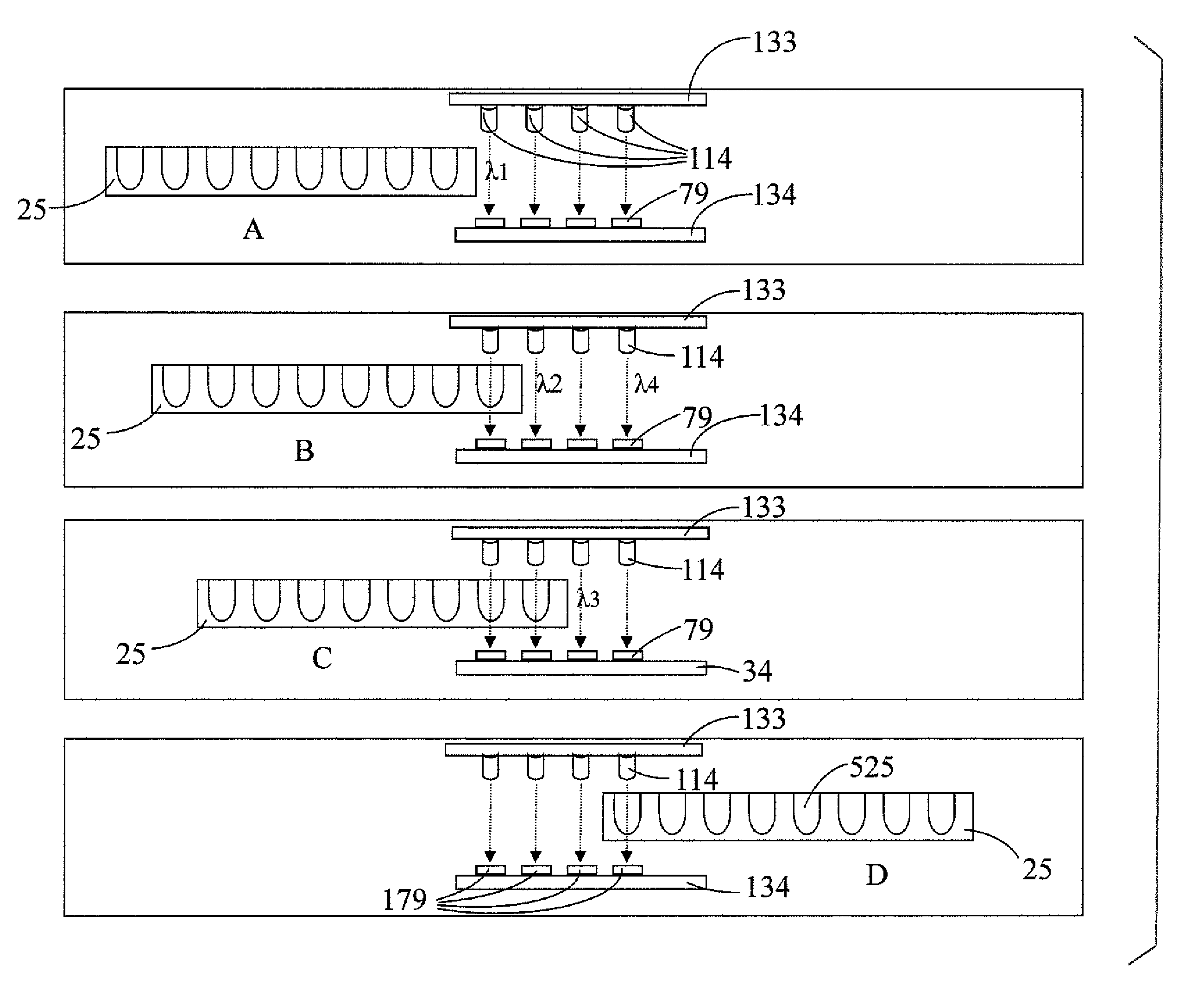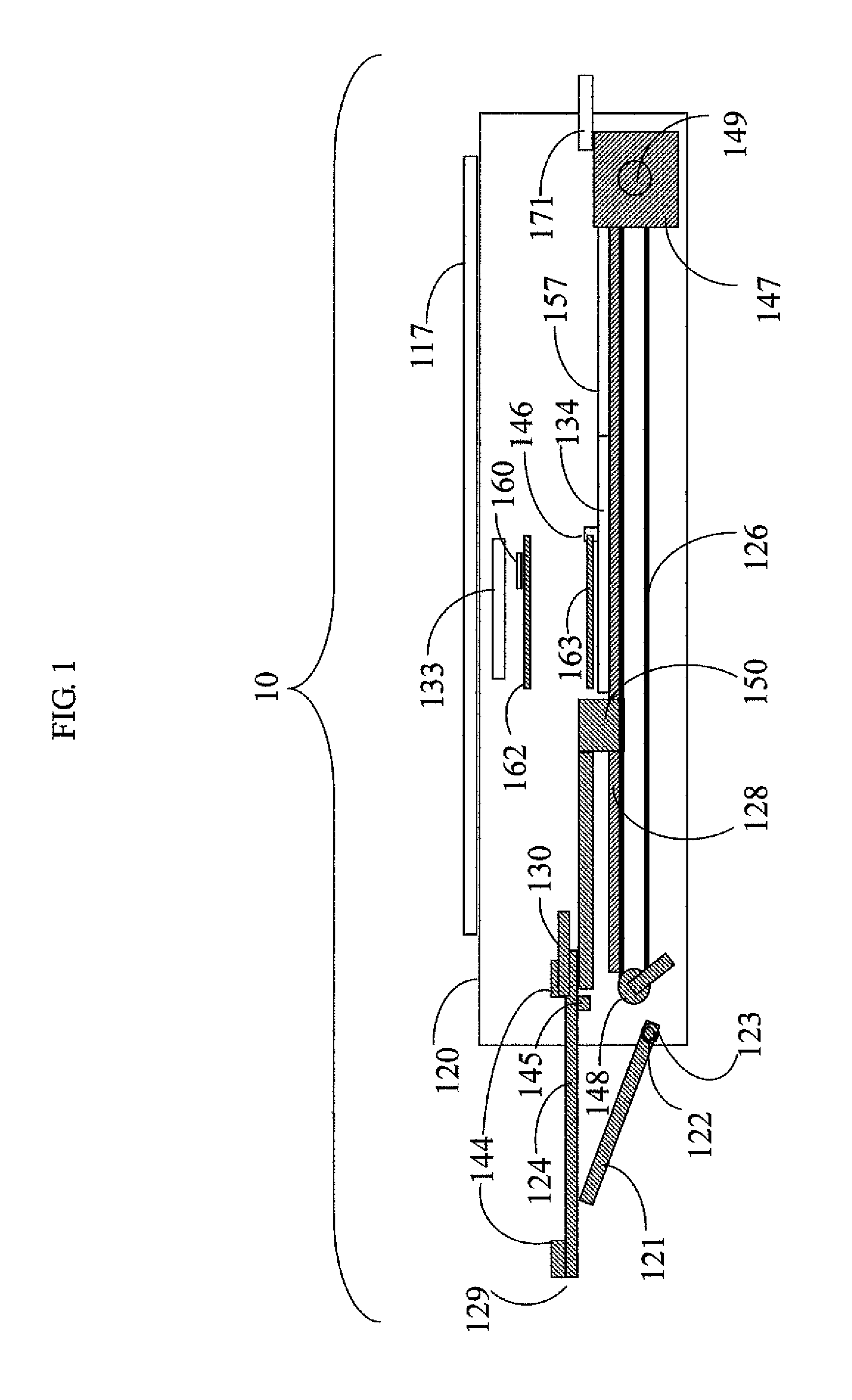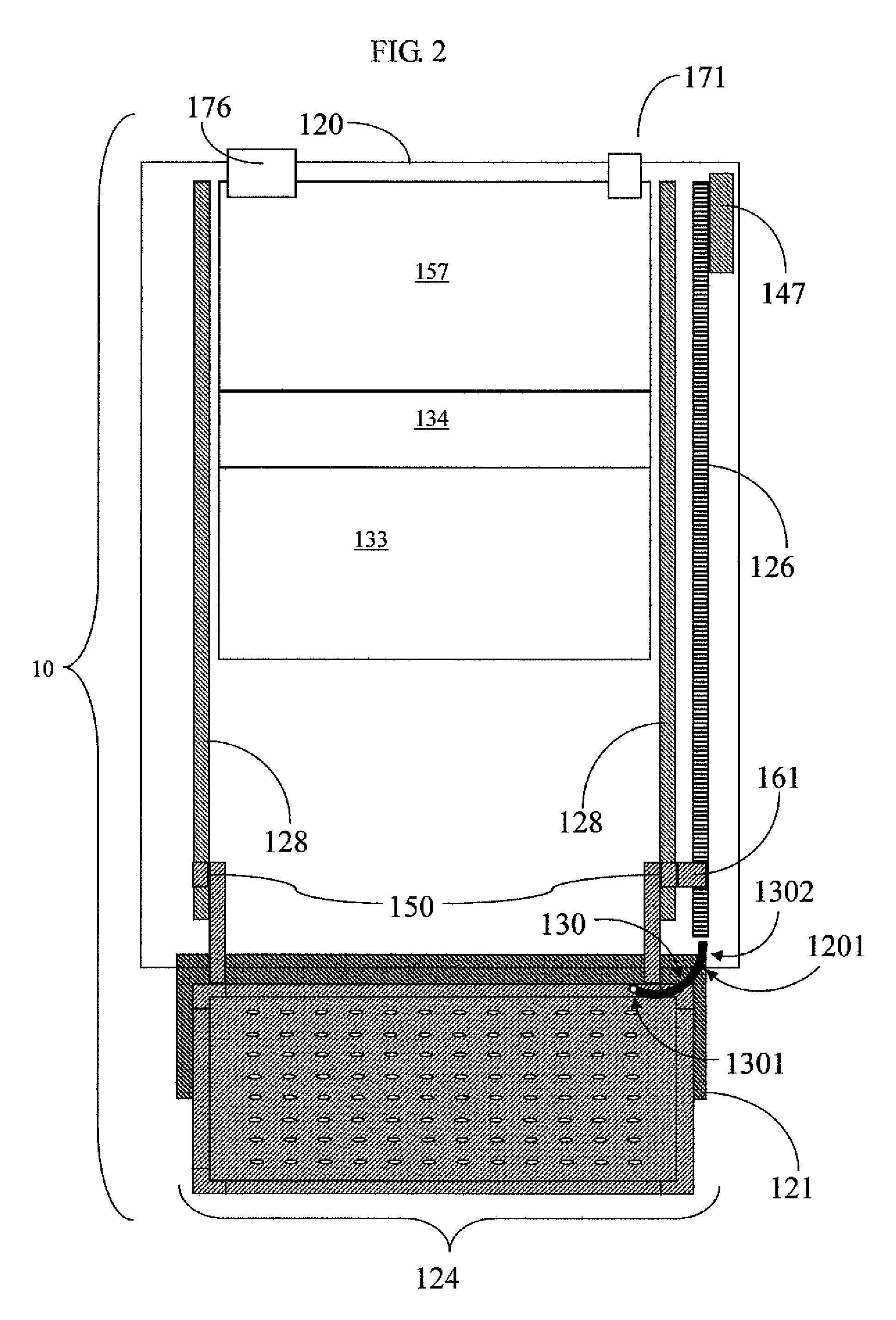Compact multi-wavelength optical reader and method of acquiring optical data on clustered assay samples using differing-wavelength light sources
a multi-wavelength, optical reader technology, applied in the direction of optical radiation measurement, instruments, spectrophotometry/monochromators, etc., can solve the problems of increasing the time for each wavelength reading by approximately 100%, kinetic assays, and many current readers' speed capabilities exceed the speed capabilities
- Summary
- Abstract
- Description
- Claims
- Application Information
AI Technical Summary
Benefits of technology
Problems solved by technology
Method used
Image
Examples
Embodiment Construction
[0030]As mentioned in the Background section above, conventional multi-wavelength microplate readers are bulky instruments that not only take up large amounts of space, but also typically take a relatively long time to acquire assay data taken at multiple differing wavelengths of source light. However, the present inventor has discovered how to read a large number of the wells of a microplate at once, which allows for reading each well with several colors, or wavelengths, of light during a single operation multiple orders of magnitude more quickly than existing methods.
[0031]The timing benefit of embodiments of the present invention can be illustrated mathematically, where “t” represents the time, in units of seconds, required to read the plate at a single wavelength. For a conventional microplate reader for an 8×12 sample well cluster (e.g., a 96 well microplate): the read time in seconds for one wavelength=t seconds, for two wavelengths=2 t seconds (i.e., 100% greater than time t ...
PUM
 Login to View More
Login to View More Abstract
Description
Claims
Application Information
 Login to View More
Login to View More - R&D
- Intellectual Property
- Life Sciences
- Materials
- Tech Scout
- Unparalleled Data Quality
- Higher Quality Content
- 60% Fewer Hallucinations
Browse by: Latest US Patents, China's latest patents, Technical Efficacy Thesaurus, Application Domain, Technology Topic, Popular Technical Reports.
© 2025 PatSnap. All rights reserved.Legal|Privacy policy|Modern Slavery Act Transparency Statement|Sitemap|About US| Contact US: help@patsnap.com



